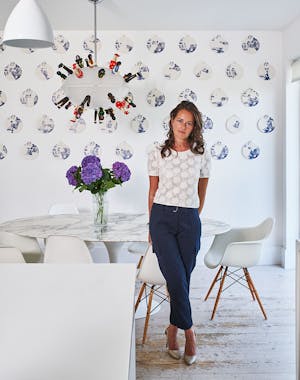Sustainability is complex, more a journey than a destination. Global warming has been part of the narrative for a long time but in recent years the effects have perhaps been more dramatic than ever before.
 The timing of Cop26 will hopefully highlight the need for immediate action as alarmingly the building and construction industry is responsible for 38% of global CO2 emissions. In fact our industry is the most toxic of all.
The timing of Cop26 will hopefully highlight the need for immediate action as alarmingly the building and construction industry is responsible for 38% of global CO2 emissions. In fact our industry is the most toxic of all.
Whilst our personal lifestyle choices can and should matter, our business and development decisions will have the biggest impact. Regulation is catching up and as it is likely that carbon emissions and efficiency will form legislation in the next couple of years, it is crucial that businesses and developers stay ahead of the curve in order to attract investment and end users.
What can interior design companies do to meet sustainability goals?
At the conceptual stage of any project, it is important to think about how the process could be made more sustainable. For example, when we work with architects at the start of a new build, we will examine the energy efficiency of materials used, in order to demonstrate compliance with the relevant BREEAM criteria. As we progress through the design process, we look at each element and ask questions such as; are the materials being sourced locally? Are they both sustainable and recyclable?
We always aim to reduce, re-use and recycle whenever possible and thereby minimise waste. For each element of the design we specify, we will always research and identify the sustainable alternative.
From communication and sharing information, to shifting cultural ideas of beauty and design, the entire sector must adapt. We must build awareness of how technologies, materials, supply chain, whole lifecycle of projects and products can affect the environment and society as a whole. The goal is to ensure these effects are considered throughout the design process and beyond.
Paying attention to how and where you’re buying from, speaking to artisans and developing relationships with them is essential. Buying things that are perhaps more expensive now but will stand the test of time and designing with a timelessness is key. We look for heirloom pieces made with craft and love by highly skilled people.
How can we educate our clients and encourage them to choose sustainable options?
It is sadly often the case that clients have little or no interest in sustainability but as increasingly we are able to demonstrate that by embracing sustainability, there will be no compromise on aesthetic or function, this sentiment is shifting. We pride ourselves on creating beautiful, luxury interiors that protect the planet.
In a recently completed project in Hampstead by using sustainable paints throughout, we protected over 70 trees and offset several tonnes of carbon through adopting the company’s procurement processes. Items include much of the clients’ existing furniture in addition to new, crafted pieces that include a kitchen table made from recycled scrap wood. The space is incredibly luxurious and unless someone specifically asked, they would not be aware that it was sustainable.

Such a big part of the problem is the volume of materials we throw out. For example, sometimes we come across immaculate kitchens which the client will ask us to remove purely for style choices. Wherever possible, we will always try to encourage clients to look at ways of re-using and repurposing.
As an example, we worked on a refurbishment project where we transformed an old office/study room into a multi-level home school room as well as a nursery. The easier option would certainly have been to strip everything out and start again but neither we, or the client wanted to do that. Even when items do need to be disguarded, rather than just throwing out and sending to landfill, we must ask the questions…can we donate it to charity, resell or recycle, and more often than not, the answer is yes!

Sustainability has always been a priority, so when I built my own home ten years ago, I incorporated features such as outside electric car sockets and installed a system whereby recycled rain-water flushes the toilets and supplies the irrigation system. I also repurposed much of the furniture and materials from my old office space into redecorating various rooms in my family home and always opt for sustainably sourced natural wood and stone on surfaces.
In order to have real impact, it is the industry that must change
I am of the firm belief that in order to have real impact, it is the industry that must change as increasingly younger purchasers and tenants are keen to understand about the sustainable nature of their environment. They want to feel they are playing a part in making the necessary changes that will ultimately save our planet.
If you can educate an industry then it can and must filter out globally. We can all start by making changes in our own homes and lives which will then have a tangible influence on a much wider scale.
We need to get away from the ‘buy-use-trash’ model. You start somewhere….and who knows where it will end up.
Main image credit: Leon Chew/Interiors: Philip Vile

















